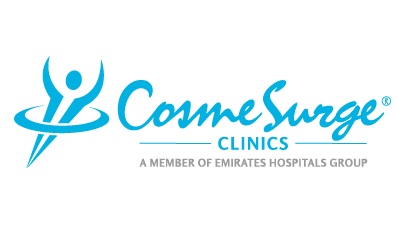
There Is No Such Thing As a ‘Healthy Tan’, Warns Consultant Dermatologist
Weather reports earlier this month indicating temperatures that felt like 50 degrees, the dangers of ultraviolet (UV) radiation to unprotected skin are at an all-time high for the year.
According to Dr Lana Kashlan, Consultant Dermatologist, CosmeSurge Clinic Marina Dubai, those without any protection, should limit their time in the sun to no more than 10 minutes per day. As such, precautions like applying sunscreen, wearing wide-brimmed hats and long-sleeve clothing and seeking shade, especially during peak sun intensity hours, are necessary.
According to UAE meteorologists, the UV radiation starts increasing in May and reaches its maximum level in July and August. Protection from the sun is crucial with SPF recommendations of 30 or higher that are broad-spectrum, which means that it blocks UVA and UVB radiation. In this regard, combining different sunscreens does not lead to more protection.
“You can’t rely on combining different SPFs because the SPF is developed based on highly particular studies that are done in the lab. The problem with mixing sunscreens is that you don’t know how much of each bottle you’re getting, so it doesn’t really accumulate in effectiveness,” said Dr Kashlan.
“Using the right sunscreen can, however, protect the skin against harmful rays. You’re much better off just getting an SPF that is higher to begin with than to try to make your own combination,” she added. “There is no such thing as a ‘healthy tan’. The act of tanning is a melanin response to damaged skin cells, but healthy tans do come in a bottle (as a self-tanner or airbrush spray tan).”
Dr Kashlan also suggested the use of swimwear and active wear that is designed with UV protection in them: “Similar to the SPF in sunscreen, they actually have UPF (a UV protective factor). In place of regular swimwear, people can wear swim shirts and cover ups that virtually have sunscreen built into them. It’s great for kids because it can be really hard to put sunscreen all over a child and re-apply. They are labelled with UPF tags which indicate how much UV radiation is being blocked.”
The skincare specialist explained that the melanin in skin is its own natural sunscreen. Melanin alone, which gives a person’s skin its colour, provides an SPF level of four. “Certainly, the fairer you are, the more susceptible you are to sunburns and skin cancer. The majority of Caucasian or white population will develop a skin cancer at some point in their lives if they live long enough. This is far more common than people realise,” she added.
However, the false sense of invulnerability with darker skin types is a common problem as well. Dr Lana Kashlan warned, “Just because darker skin types have more melanin in their skin and more protection, it doesn’t mean that they can’t get skin cancer. In many instances, my darker patients will tell me ‘I don’t get sunburns. I don’t need sunscreen.’ In truth, they absolutely need to protect themselves.”
According to Dr Kashlan, age is a relevant factor for skin cancer but it can also be misleading. Skin cancer develops after chronic accumulation of sun exposure. The more lifetime sun exposure a person has the higher chance of developing skin cancer. However, there is a particular type of skin cancer called ‘melanoma’, which is the type that arises from moles and skin pigment cells. This particular type is more common among young people from the age range of 18 to 35. The fact that a person is young does not mean that they are immune.
As a precautionary measure, she suggests people pay attention to the warning signs beforehand. “We talk about the ‘A, B, C, Ds’ of moles or melanoma for self-checking. The ‘A’ is for ‘asymmetry’. Moles should be round and symmetrically even. ‘B’ is for the ‘border’ around the mole, which should be even and not jagged. ‘C’ is for ‘colour’. There should only be one consistent colour. ‘D’ is for ‘diameter’. Anything bigger than a pencil eraser or six millimetres is suspicious and worth having evaluated,” explained Dr Kashlan.
She noted that having a mole with any of these characteristics does not necessarily mean the mole is skin cancer, but it does mean that it is worth having a dermatologist take a look.























